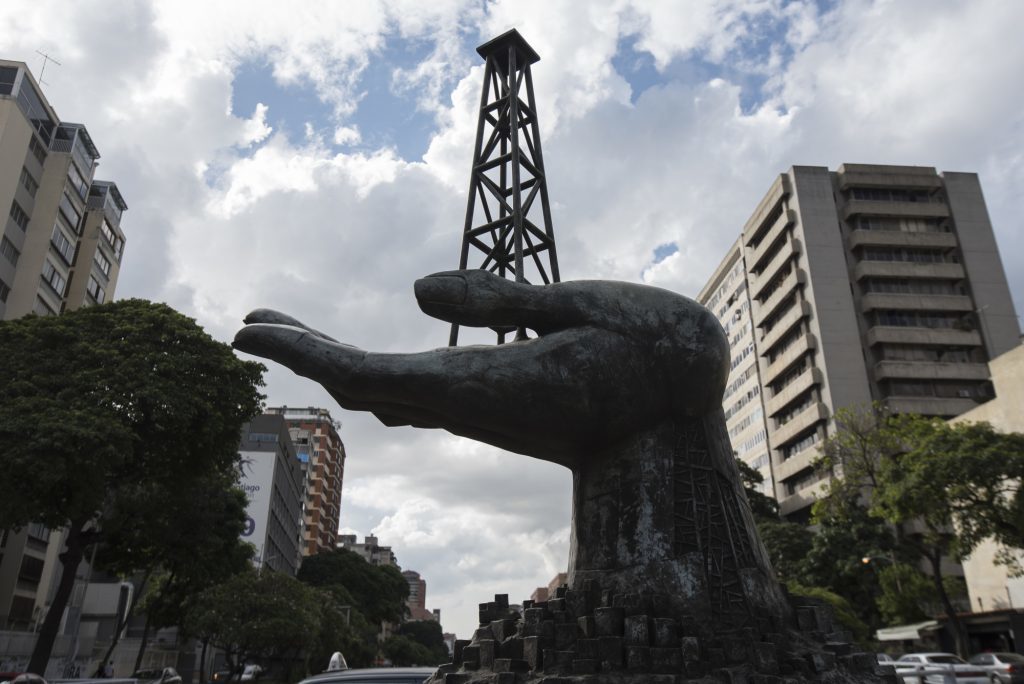
The world’s largest energy trader says oil prices are set to rally further as OPEC output cuts and American sanctions on Iran and Venezuela cause a “shortage” of the low-quality heavy crudes refiners rely on.
“From here there’s probably the potential to be a little bit higher,” said Russell Hardy, chief executive officer of Vitol Group. “Oil supply is going to be pretty tight until the third quarter.”
As the who’s who of the oil industry descend on London for the annual International Petroleum Week of conferences, meetings and cocktail parties, traders are dealing with an international crude market that’s increasingly divided.
Texas and other shale-rich states are spewing a gusher of high-quality crude — light-sweet in the industry parlance — feeding a growing glut that’s bending the global oil industry out of shape. Refiners who invested billions to turn a profit from processing cheap low-quality crude are paying unheard of premiums to find the heavy-sour grades they need.
“You have a squeeze on heavy supply probably for the next six months,” Hardy said in a Bloomberg TV interview. “The OPEC decision has meant there’s less available, the Iranian situation has meant there’s less available, and the Venezuelan situation now is adding to that.”
The heavy-light crude conundrum is turning the oil market’s usual price patterns on their head. The Brent-Dubai exchange of futures for swaps, which reflects the heavy-light spread, narrowed to an almost 9-year low earlier this month.
The light-heavy mismatch is good news for OPEC giants like Saudi Arabia and Iraq, who don’t produce much light-sweet, but pump plenty of the dirtier stuff. Car drivers could even benefit, because too much light-sweet crude often leads to too much gasoline, and lower prices. On the flip side, truckers may find themselves short-charged, as refiners prefer heavy-sour crude to make diesel.
While less well known than industry giants like Exxon Mobil Corp. and Royal Dutch Shell Plc, Vitol is the world’s largest independent oil trader, handling more than 7 million barrels a day — enough to meet the combined consumption of Germany, France, Spain and Italy.
Hardy said the recent price rally that’s pushed Brent, the global benchmark for light-sweet crude, above $65 a barrel was “fully justified” on supply and demand fundamentals. In contrast, the sell-off from October until late December, when Brent plunged from more than $85 to $50 a barrel was “a bit irrational,” he said.
While Vitol painted a bullish view for the first half of the year, it warned shale supply could turn the market around in the fourth quarter because new pipelines linking the Permian with the U.S. Gulf of Mexico coast will allow drillers to boost production. Oil demand growth is the other wild card as the global economy slows down. Vitol is forecasting consumption growth of just 1.1 million barrels a day in 2019, down from 1.5 million barrels a day in 2018.
“There could be a question mark over market direction by the fourth quarter of this year,” Hardy said. “There’s a certain amount of pent-up production that’s awaiting logistics to allow it to be exported. As the pipelines come on, some of the drilled but uncompleted wells will start to hit. We should have a surge in production related to the pipelines.”
U.S. oil production last week hit an all-time high of 12 million barrels a day, up nearly 2 million barrels a day from a year ago. At the same time, America exported a record 3.6 million barrels a day of crude oil, putting it ahead of every OPEC country barring Saudi Arabia and Iraq, at least on a gross basis.
When U.S. production surges further, OPEC will face a “bit more challenging situation,” Hardy said. But for the time being, the cartel is keeping “supply and demand reasonably tight, so we think that refiners have to reach out for crude oil, and this is not helped by the problems in Iran and Venezuela.”
Recommended for you
